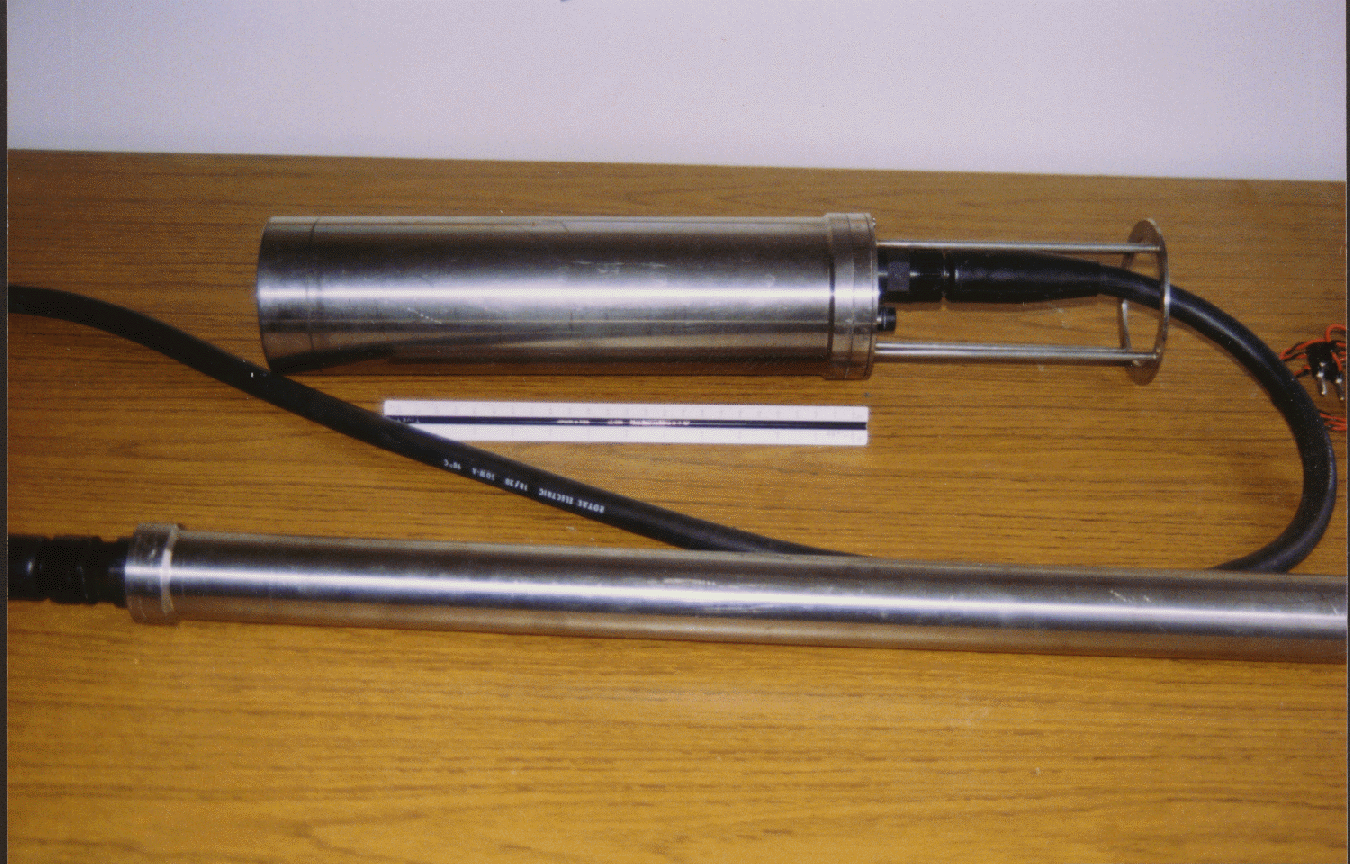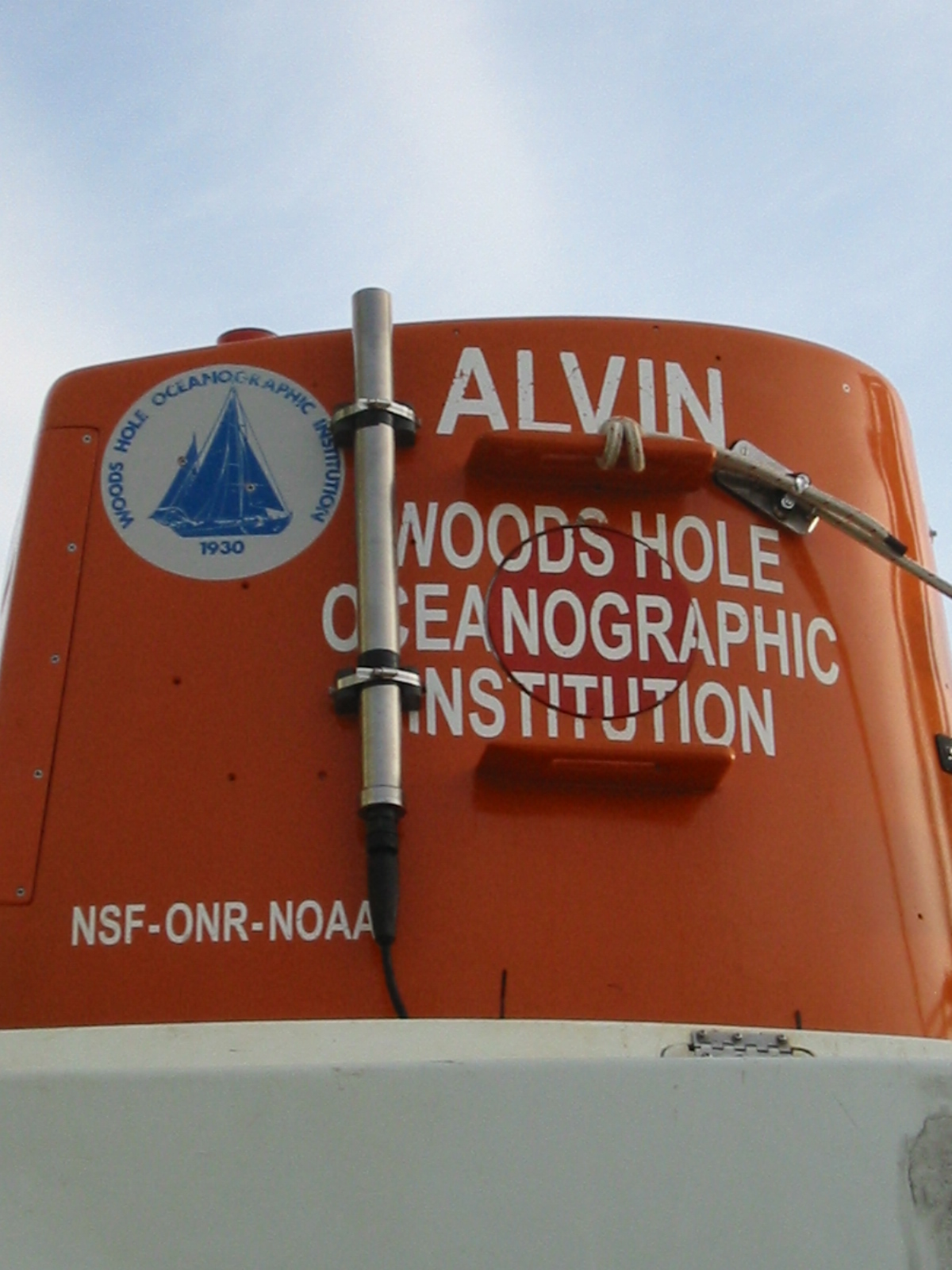The Alvin Magnetometer
Woods Hole Oceanographic Institution has a magnetometer that was built by IFG (Instruments For Geophysics) especially for the deep submersible ALVIN and consists of a three-axis fluxgate vector magnetometer with an extra z-sensor for gradiometer measurements. The system consists of two titanium pressure housings: an electronics housing (23" long x 4.25" diam.) and a sensor housing (28" long x 2" diam.). These housings are pressure tested down to 6000 meters depth. Datalogging is integrated into the ALVIN data system but the system can be operated off of any platform with power (26 Volts) and RS232 communications. The sensor has been used on many different deep diving submersibles from Nautile to Shinkai 6500, "click here" for links to these platforms.
How the sensor works
A fluxgate magnetometer consists of two coils of wire wrapped around a core of material that is easily magnetized (i.e. has a low saturation or high permeability). An alternating current is passed through one coil and the core becomes magnetized in a similarly alternating fashion. This induces a current in the second coil. In the absence of any external field these two coil currents balance each other out - to give zero current and thus zero field. However, in the presence of an external field, like Earth's field, the core is already partially saturated in the direction of the field and so when the driving coil current is imposed, the induced coil current will no longer match the driving coil current. The extent of this mismatch is a measure of the strength of the external field. The sensor is directionally sensitive and so fluxgates are often used as compasses.
Three orthogonally oriented fluxgates can be used to create a 3-axis sensor.
For more information on the Alvin magnetometer, contact:
Rick Chandler : Alvin Group
rchandler@whoi.edu
Dr. Maurice Tivey
mtivey@whoi.edu

